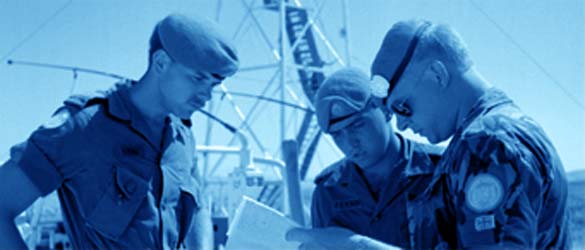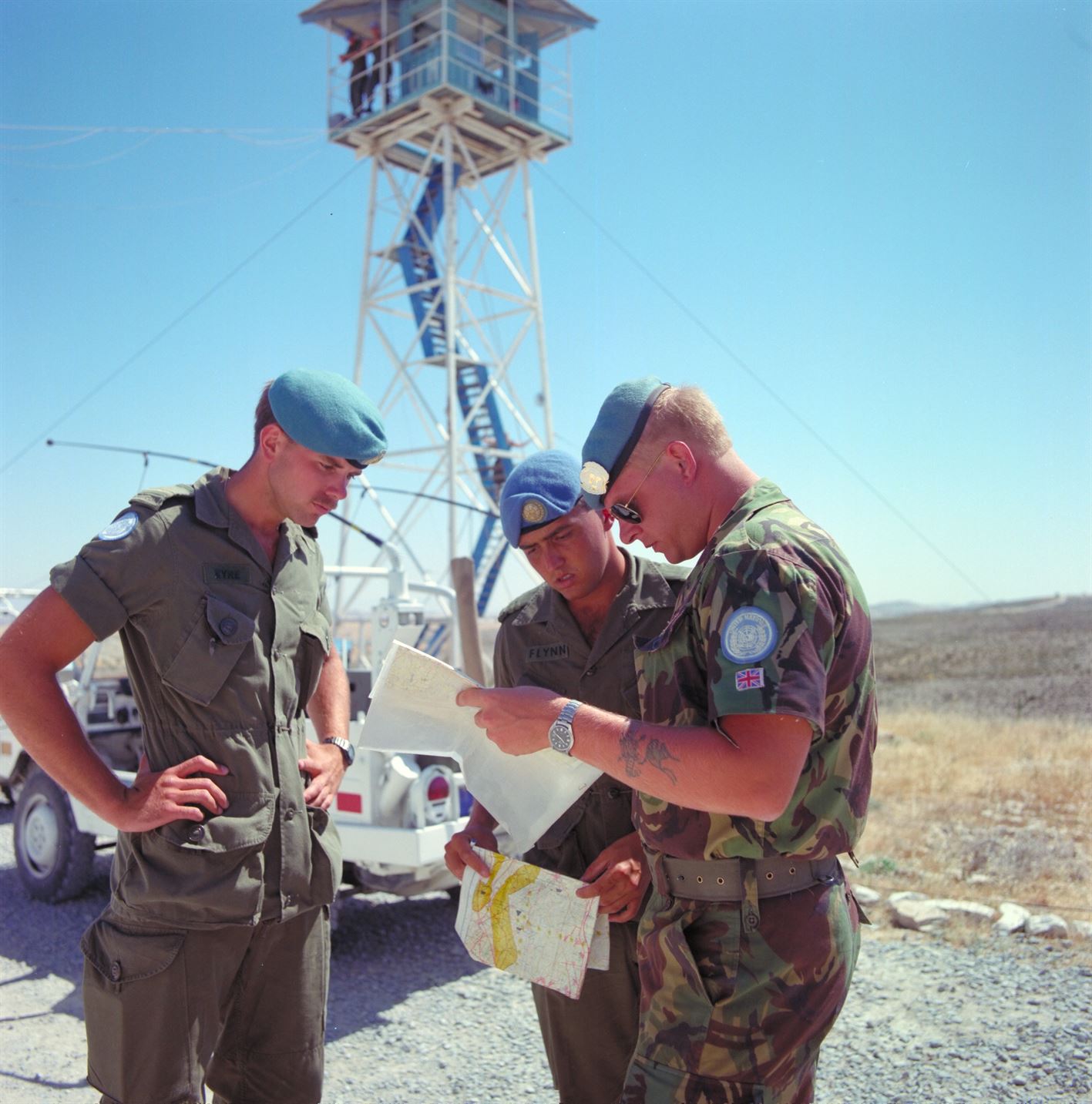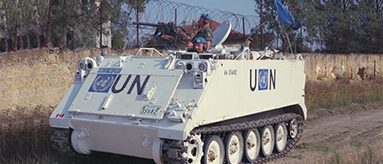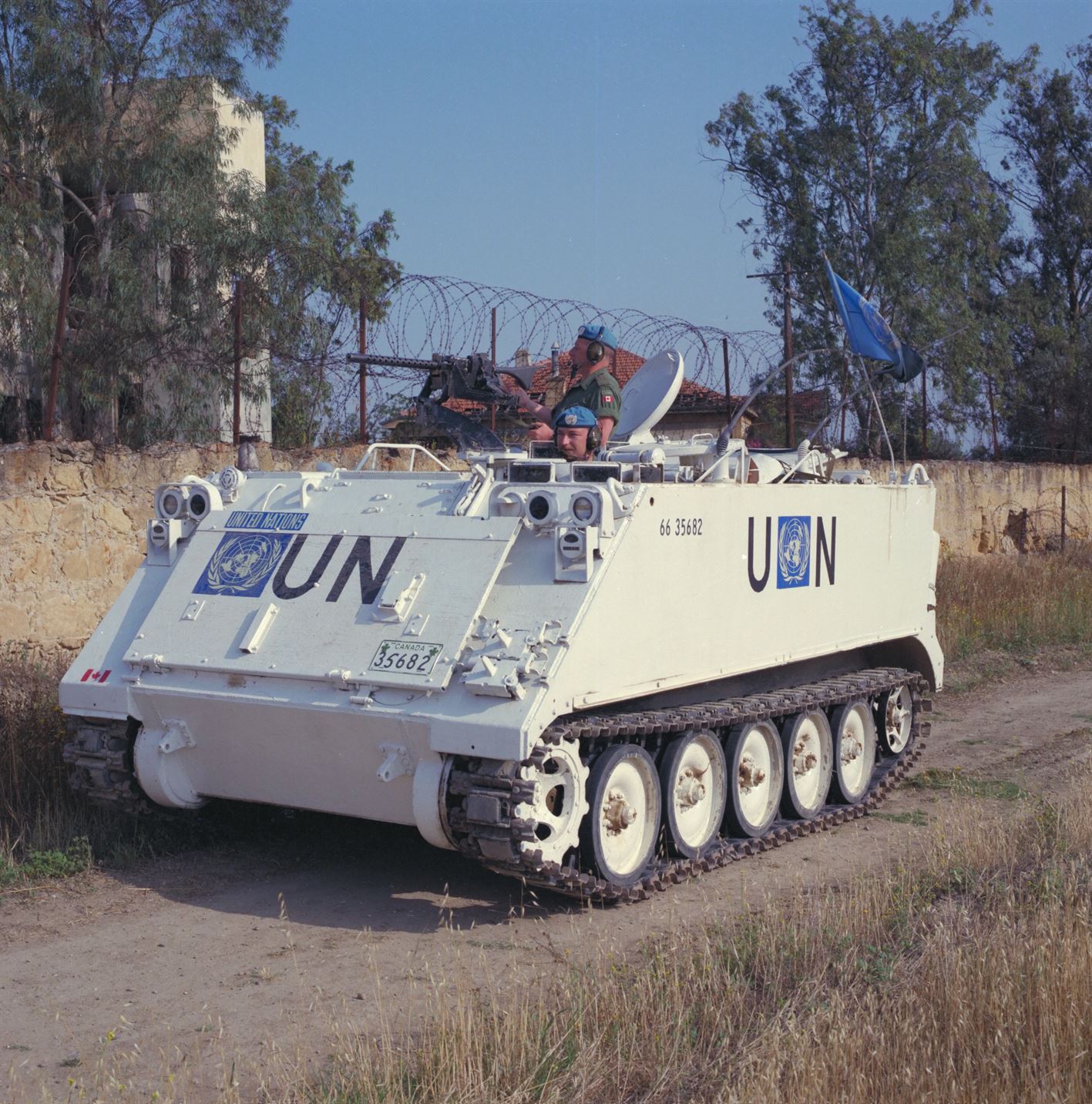The Canadian Armed Forces in Cyprus
The Canadian Armed Forces in Cyprus
This publication is available upon request in alternate formats.
PDF Version
The peacekeeping operation in Cyprus, from 1964 to today, is one of Canada's longest and best-known overseas military commitments. A large Canadian contingent served on the island from 1964 to 1993, and a small Canadian Armed Forces presence remains there today as United Nations (UN) peace efforts continue.
In total, more than 25,000 Canadian Armed Forces members have served in Cyprus over the decades. Many of them served in Cyprus more than once, participating in several rotations.
The length of the mission and the large number of Canadians who have served in Cyprus over the years makes it a well-known effort to many of us. Like Veterans of the First and Second World Wars and the Korean War, the men and women who willingly left their homes and travelled halfway around the world to serve in a tense and violent place like Cyprus are Canadians who achieved and sacrificed much to protect peace and freedom.
Cyprus
Cyprus is a small Mediterranean island of just over 9,000 square kilometres, making it a little smaller than Cape Breton Island, Nova Scotia. It has a population of almost 800,000 people. Cyprus has a very tumultuous history, including the period leading up to and after 1960, when the island gained independence. Much of the unrest is rooted in ethnic tensions.
Cyprus has been largely Greek in culture, language and population for more than 3,000 years and many Greek Cypriots have long favoured politically joining the nation of Greece. However, there is also a sizeable minority population of Turkish people who are uneasy about this possibility, as well as the country of Turkey itself, which is concerned about the situation in Cyprus because of its nearness to the Turkish coast. During the time around the island's independence, frictions between the ethnic groups in Cyprus grew, leading to the spread of strife and violence across the island in 1963.
The World Responds
Because of this unrest, Cyprus asked the UN to establish a peacekeeping force in 1964. Once it arrived, the situation was unlike anything that UN peacekeepers had previously experienced. The quarrelling populations of Turks and Greeks were very intermingled on the island and the UN troops were faced with maintaining the peace in a situation where many small groups of Turks lived among the larger Greek population. Canadian soldiers needed both their traditional skills of soldiering and the skills of managing disagreements and conflicts between civilians. It has been remarked of difficult situations like these that "Peacekeeping is not a soldier's job, but only a soldier can do it."
A fragile balance was reached but was upset in 1974 with a coup d'etat by Greek Cypriots who wanted the island to become a part of Greece. In turn, Turkey invaded the island and took control of the northern part of Cyprus. Canadian and the other UN peacekeepers suddenly found themselves in the middle of a war zone where there was little stability and much violence.
After several weeks of active fighting in which three Canadians died and 17 were injured, a cease-fire was negotiated. The UN established the famous "Green Line," a cease-fire line and buffer zone stretching across Cyprus, separating the portions of the island controlled by the Greeks and the Turks.
UN peacekeeping forces patrolled this uneasy buffer zone which, in places, was only several metres wide. At times, gunfire regularly occurred along the Green Line. It was not safe to move so much as a sandbag along the buffer zone because it might create an incident. Canadian peacekeepers had to live with the fact that they were between two very agitated groups and that they were tasked with keeping a lid on simmering tensions. Crowd control and dealing with unruly mobs upset over some violation, whether real or imagined, were ongoing issues that the Canadians were constantly called on to diffuse.
Facts and Figures
- The earlier Canadian Armed Forces contingent in Cyprus varied in size from fewer than 500 to more than 1,100 personnel. In recent years one Canadian officer has been part of the international peacekeeping force there.
- More than 160 UN personnel from different countries have died in the course of the peace efforts in Cyprus.
- The 180 kilometre-long Green Line buffer zone that runs the width of Cyprus varies in width from 20 metres to seven kilometres.
Heroes and Bravery
To one degree or another, bravery and heroism were integral parts of the efforts of all the Canadians in Cyprus over the years. The invasion of 1974 saw fierce fighting with thousands of Turkish soldiers landing in Cyprus in just the first 24 hours. Many episodes of Canadian courage and valour emerged from this period which saw one of the first uses of direct force by Canadians to protect themselves in a peacekeeping mission.
During the invasion, one of the main Turkish objectives was the airport in Nicosia, the capital of Cyprus. The UN commander was able to negotiate a local cease-fire and withdrawal of Greek and Turkish forces from the airport area, which the Canadian UN troops then occupied. However, the Turks still threatened to attack the airport. The defending Canadians had only a few anti-tank weapons and heavy machine guns, but the strategic Canadians moved around the airport, under cover of night, to create the illusion that the airport was heavily defended. The ruse worked and the Canadians held the location.
During the heavy fighting of the 1974 conflict, a number of bravery medals were awarded to Canadian soldiers. One example occurred when a group of Canadians in Cyprus came under fire. Several soldiers were hit, including the officer leading the patrol. Private Joseph Plouffe went at once to try to give the injured officer first aid but was wounded, as well. These two injured Canadians were in a very vulnerable position and threatened by machine gun fire. Corporal Joseph Whelan and Privates Joseph Belley and Joseph Pelletier braved the shooting to rescue their comrades.
Sacrifice
Canadians can be rightfully proud of our reputation around the world for being a force for peace, but this resolve comes at a steep cost: about 130 Canadian personnel have died in the course of our country's peace efforts.
In Cyprus, 28 Canadian peacekeepers gave their lives, paying the ultimate price in our country's efforts to help the people of that nation. The loss of Canadian lives in Cyprus demonstrates in the most profound way the dedication our military personnel have to their mission and to their country.
The injuries and harsh experiences that Veterans live through while on these international peace missions can impact them for the rest of their lives.
Canada Remembers Program
The Canada Remembers Program of Veterans Affairs Canada encourages all Canadians to learn about the sacrifices and achievements made by all those that served, and continue to serve, during times of war and peace, and to become involved in remembrance activities that will help to preserve their legacy for future generations of Canadians.
- Date modified:



